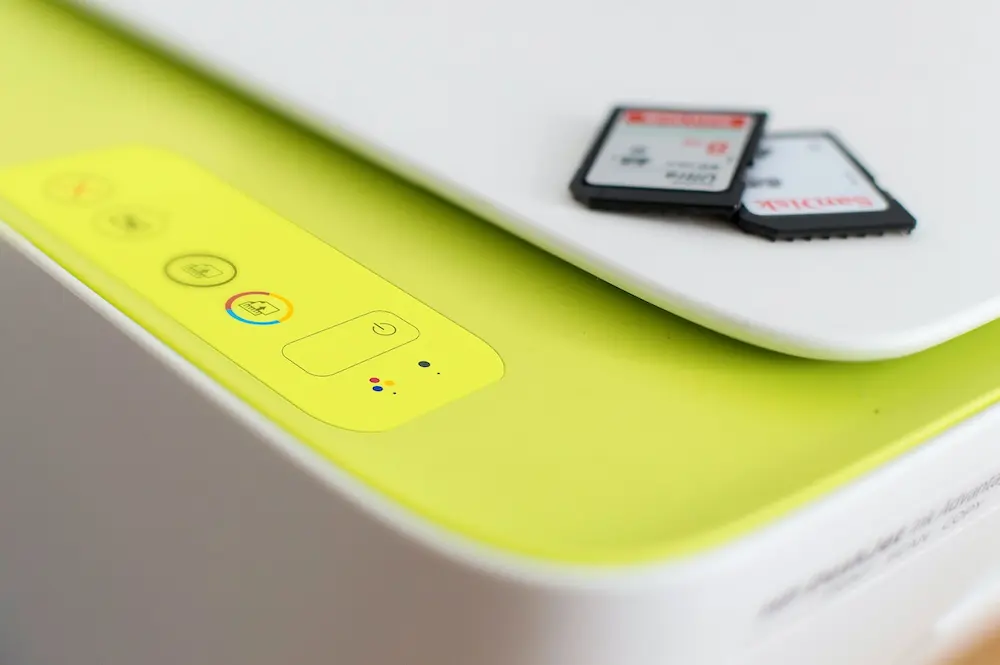The printing industry in the U.S. is huge, worth nearly $83 billion, since companies and individuals alike have many printing needs but don’t have the equipment to meet those needs. If you’re considering starting a printing business, you’ll need to purchase several types of equipment to print all sorts of items, from business cards to brochures, to t-shirts.
In this guide, you’ll find details about all the equipment you’ll need to get your printing business off the ground.
Printers
Of course, you’ll need printers! But what kind? If you want to offer a full suite of printing services, you’ll need several different types of printers.
- Laser Printer: Laser printers are great for printing brochures, flyers, and documents quickly. If you’re going to start a print shop, the ability to print these items is a must.
- Inkjet Printer: Commercial grade inkjet printers are slower than a laser printer, but they feature higher resolution output.
- Digital Printer: Digital printers are good for short runs of high quality prints and allow much customization.
- Wide Format Printer: Wide format printers are used to print banners and posters.
- Garment Printer: Garment printers can print on t-shirts or other materials.
- Sublimation Printer: Sublimation printers are great for printing mugs or travel mugs.
- 3D Printer: If you want to really boost your business, you could invest in a 3D printer. They can be used to print all sorts of objects, from toys to product prototypes.
Cutting System
A cutting system will allow you to cut printed business cards, and some can also cut other materials. Some types of systems will allow you to print and cut a variety of materials, including vinyl. You could use that kind of machine to create magnetic vinyl car signs, labels, stickers, or even customized party decorations or greeting cards.
Laminator
A laminator can be used to increase the durability of things like employee I.D.s, bookmarks, catalog covers, advertising materials, and much more. A laminator is not a necessity for a printing business, but it can add another stream of revenue for you.
Binding Equipment
Many of your customers may want items to be bound, such as manuals, large brochures, reports, and more. Again, binding equipment is not a necessity, but you can earn additional revenue.
Computer and Software
Of course, you’ll need a computer and design software to create custom items. You can make the software available to your customers so they can create things like logos for their business cards, brochures, and more.
How Much Does It Cost to Start a Printing Business?
Now the big question – how much is all of this going to cost? If you purchase all this equipment and you choose commercial grade equipment, you could easily spend $20,000 to $50,000 or more on equipment alone. If you start on a smaller scale, you could likely keep it under $10,000.
Other costs, however, are also involved. You’ll need to rent a shop space, which will require a deposit of several thousand dollars.
You’ll also have costs to set up your website, form a business entity such as a limited liability company, obtain business licenses and permits, and to get business and equipment insurance.
All in all, if you start small, you could probably stay at about $15,000. If you go full scale, you’re looking at $60,000 to $100,000.
Create a Business Plan
If you’re going to need funding to cover some or all of your startup costs, a lender or investor is going to want to see your business plan. Even if you don’t need funding, however, a business plan is essential. Writing a business plan will help to develop strategies to start and grow your business.
Your business plan should have several parts.
- An executive summary that highlights all the key points of your plan. It should be designed to “sell” your plan to a lender or investor in just one to two pages.
- A company summary that includes your company history and your business mission.
- A summary of the services you plan to offer, your pricing strategy, and your value proposition.
- An analysis of the printing market including its size and growth potential.
- An analysis of your direct competitors and their strengths and weaknesses.
- A sales and marketing plan – how are you going to attract customers, particularly business customers?
- An operations plan, meaning how you’ll run the business on a daily basis.
- A summary of your management and personnel plan.
- Financial projections.
You’ll want to keep in mind that your business plan may change over time. Running a business is a continuous learning process. You’ll find that some strategies work and some do not, so you’ll need to revise your plan as you learn.
Types of Funding
Many new business owners start by using their own funds, or they have family or friends who are willing to extend a loan or to invest in the business. If that’s not an option for you, you may be able to get a bank loan or an SBA loan through your bank. An SBA loan is the easiest option, but it still can be a challenge to get approved when your business has no track record.
If you are able to get a loan, it’s likely that you’ll have to personally guarantee the loan, meaning that you’ll be personally liable for paying the loan if your business cannot pay it.

